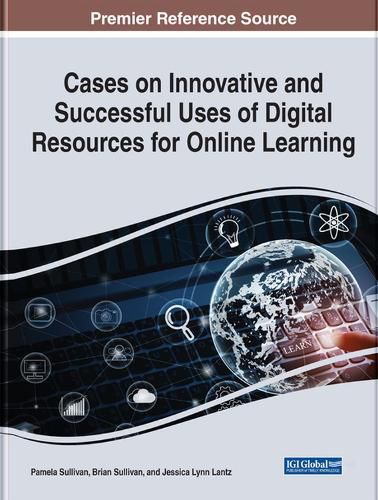Readings Newsletter
Become a Readings Member to make your shopping experience even easier.
Sign in or sign up for free!
You’re not far away from qualifying for FREE standard shipping within Australia
You’ve qualified for FREE standard shipping within Australia
The cart is loading…






This title is printed to order. This book may have been self-published. If so, we cannot guarantee the quality of the content. In the main most books will have gone through the editing process however some may not. We therefore suggest that you be aware of this before ordering this book. If in doubt check either the author or publisher’s details as we are unable to accept any returns unless they are faulty. Please contact us if you have any questions.
Education will continue to be dominated by technology for the foreseeable future. The rush to respond to the health concerns of the pandemic led to a mass adoption of hybrid and remote online learning tools, without the careful consideration and placement within a conceptual framework that would have occurred prior to adoption in best practices scenarios. As the education field reflects and moves forward, this book can help by highlighting cases in remote or hybrid learning that were successful, despite the rushed nature of the change.
This book evaluates and describes successful initiatives in remote and hybrid learning for early childhood through college and job training levels. Digital technologies promote project-based learning and facilitate engagement in the curriculum, however, previous studies of technology integration have shown that it is most effective when integrated into an existing curricular purpose and utilized within a strong conceptual framework of combined academic and technological goals. During the pandemic disruption, remote and hybrid tools were adopted rapidly and often without the benefit of such careful utilization. This book provides an opportunity to conduct that careful consideration in the past tense, looking at what worked during the disruption so that successful practices may be considered for the future. The case studies contained within this book provide an opportunity for scholars, teachers, and stake holders in education to examine and learn from examples of successful instruction utilizing digital tools for remote and hybrid learning.
$9.00 standard shipping within Australia
FREE standard shipping within Australia for orders over $100.00
Express & International shipping calculated at checkout
This title is printed to order. This book may have been self-published. If so, we cannot guarantee the quality of the content. In the main most books will have gone through the editing process however some may not. We therefore suggest that you be aware of this before ordering this book. If in doubt check either the author or publisher’s details as we are unable to accept any returns unless they are faulty. Please contact us if you have any questions.
Education will continue to be dominated by technology for the foreseeable future. The rush to respond to the health concerns of the pandemic led to a mass adoption of hybrid and remote online learning tools, without the careful consideration and placement within a conceptual framework that would have occurred prior to adoption in best practices scenarios. As the education field reflects and moves forward, this book can help by highlighting cases in remote or hybrid learning that were successful, despite the rushed nature of the change.
This book evaluates and describes successful initiatives in remote and hybrid learning for early childhood through college and job training levels. Digital technologies promote project-based learning and facilitate engagement in the curriculum, however, previous studies of technology integration have shown that it is most effective when integrated into an existing curricular purpose and utilized within a strong conceptual framework of combined academic and technological goals. During the pandemic disruption, remote and hybrid tools were adopted rapidly and often without the benefit of such careful utilization. This book provides an opportunity to conduct that careful consideration in the past tense, looking at what worked during the disruption so that successful practices may be considered for the future. The case studies contained within this book provide an opportunity for scholars, teachers, and stake holders in education to examine and learn from examples of successful instruction utilizing digital tools for remote and hybrid learning.